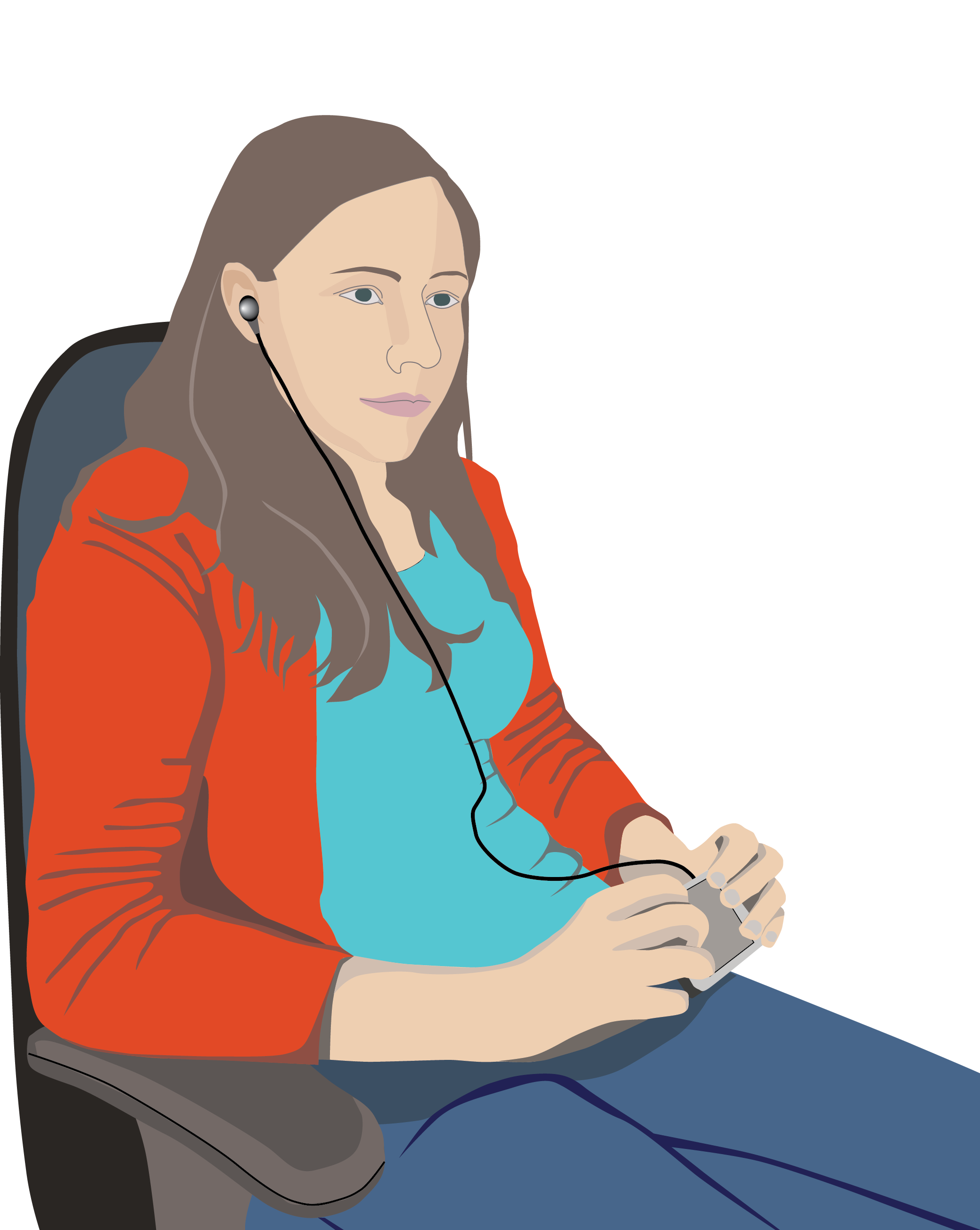Meet Carole

Carole, 34 and single, lives in a flat in the centre of Paris, near Bastille. She has a guide dog, but she says this is mostly because it’s great for socialising, since she is otherwise quite good at getting around in Paris. Carole lost her sight when she was in her twenties due to retinitis pigmentosa. Some of her relatives have the same condition, but when she was young, Carole did not want to hear about Braille. As a consequence, she learnt it at a later age and is not very good at it.
Carole is quite competent at using computers. On her computer at home, she uses Windows and the open-source screen reader NVDA, which renders the content of the computer screen through synthetic speech. In the office, she has a computer with Windows and the commercial screen reader JAWS and a Braille display. She never uses Braille for reading, but she thinks it is very useful for her when she has to edit text, to check the spelling of words, etcetera.
Carole likes the neighbourhood near Bastille. The vendors in the food shops nearby know her, take the time for a chat and know what she likes. There are also good connections with public transport.
A day in the life of Carole
Today, Carole has received a 75-page report in digital format from another company; she needs the data in it to complete another report that she is working on. Through her screen reader, the report appears to have no structure at all; Carole has no way to access a table of contents or to use the headings to navigate to specific sections. On the screen she is sure that the text shows headings and subheadings using different fonts and sizes, but she cannot perceive these features. She can only find the information she needs by reading the entire document. She can also search the text, but she is not certain whether this will lead her to the right sections. As a result, it takes her most of the day to find information that would have required only an hour or so in the document had been properly designed.
On her way home, the bus is diverted due to a fire on its usual route. The bus company’s smartphone app is not screen reader accessible, so she could not find this out before getting on the bus. If she had known, she would have taken the subway instead. In addition, due to the diversion, she cannot rely on the automatic announcements of the bus stops on the bus, so she needs to ask other passengers to tell here where to get off.
When she finally arrives at her neighbourhood and goes to the butcher’s, the butcher asks her why she looks upset. He does not really understand the problem with the structure of digital document, but wants to please her and gives her a special piece of meat, the one that butchers usually keep for themselves. When she gets home, she finds a letter in her letter-box, but after running it through a scanner and an OCR program, she can hardly read it because it was poorly photocopied. She shows the letter to a friend over a video chat program; it turns out to be an invitation to a meeting about the co-ownership of the block of flats where she lives. She calls the concierge to ask him what is going on.
After dinner, she starts her computer again and goes online to buy some flowers for her aunt’s birthday. The structure of the website is quite complex and Carole has difficulty finding a fitting bouquet. The website shows only pictures of bouquets with names such as “Christmas”, “Alchemy”, “Noa” or “Renoir”, which do not describe the size nor the colours or types of flowers, which makes it hard to make a choice. She finally settles for a bouquet with a name that sounds nice and with a priced that she finds acceptable. She manages to enter her aunt’s address, where the flowers should be delivered, but eventually fails to get through the payment process. She will have to wait until the shops open again on the next day so she can place her order on the phone, but then her aunt will receive the bouquet one day after her birthday.
See also the needs & preferences set for Carole.
German translation of Carole (PDF).
Text: © Copyright: Université Paris 8, 2015. The text is made available under a Creative Commons Attribution 4.0 International Licence (CC BY 4.0).
Image: © Copyright: The University of Southampton, 2016. This image is made available under a Creative Commons Attribution 4.0 International Licence (CC BY 4.0).
German translation: Hochschule der Medien / Stuttgart Media University.
MOOCAP is funded by the ERASMUS+ grant program of the European Union under grant no. 2014-1-DE01-KA203-000679 (MOOC Accessibility Partnership), through the German Academic Exchange Service (DAAD). This website reflects only the project’s view and neither the European Union nor the DAAD are liable for any use that may be made of the information contained herein. For more details, including contact details, see also our impressum / legal notice.